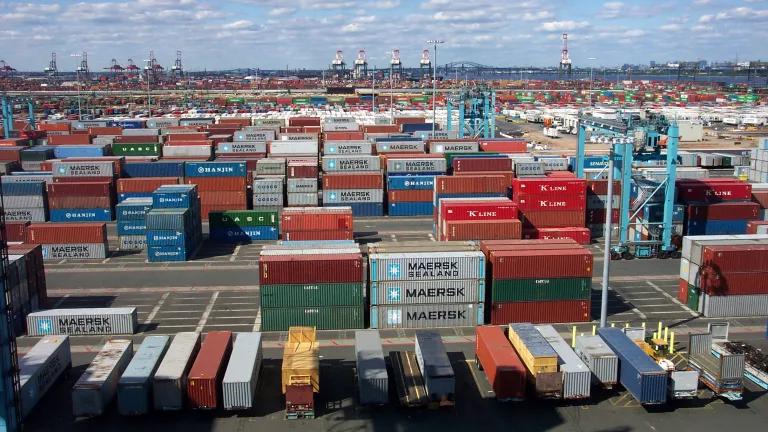Lessons from EVS37: An International Conference on Electric Transportation
International conferences about innovation in transportation, like EVS37, are an opportunity to bring important lessons home.

EVS37 opening ceremony
At the end of April, one of the largest conventions in the electric transportation sector, EVS37, took place in Seoul. The convention drew a mix of stakeholders from across the globe—including academic researchers, prominent industry leaders, and policymakers—to gather together and unveil technology innovations, new cutting-edge research, and policy expertise. The pace and scale of the clean transportation transition was palpable. The environment was, in a word, electric.
Over a period of four days, EVS37 catalyzed the exchange of ideas spanning many topics: future battery chemistries and their potential market impacts; charging infrastructure grid integration and the feasibility of vehicle-to-grid; global market trends and best practices in designing policies, standards, and regulations. Across the board, EVS37 was an opportunity to coalesce around collective solutions to some of the most pressing issues our transportation systems face today.
So, what were the takeaways from EVS37? What lessons can we bring home?
Charging infrastructure needs to be accessible if we want broad-based EV adoption
The clean transportation transition cannot take place without large-scale charging infrastructure build-out. According to research presented by U.C. Davis at EVS37, having access to both public and private charging stations can influence whether people ultimately switch to an electric vehicle (EV). However, having access to public charging alone is, on average, not enough to drive purchasing behavior. As you can imagine, not having access to a charging station near your home can be a major barrier to EV adoption, especially for people who live in apartment complexes (who are also often of lower income than homeowners). Even though access to overnight charging at apartment buildings can save drivers up to $500 annually, many apartment dwellers face financial barriers to installing charging stations today.
Removing financial barriers to building charging stations in apartment buildings should be prioritized in policymaking. At EVS37, solutions to this problem included supporting or creating loan programs geared toward apartment residents. One successful example is French start-up Logivolt, created through a public-private partnership, which covers all the up-front costs of installing charging stations located in apartment buildings. Gradually, up-front costs are paid back by participants, effectively reducing the initial barrier to entry. Another example is California’s Property Assessed Clean Energy Loss Reserve Program, which also covers the upfront costs of installation but instead provides a model where costs are recovered through property taxes. Both of these programs provide a framework to reduce barriers to infrastructure access that we can look to and learn from.
Our grid needs to be prepared to handle heavy-duty vehicle charging loads
Ensuring the electrification of heavy-duty vehicles (HDVs) worldwide is essential for cleaner, healthier air and communities. While heavy-duty vehicles only make up 3.6 percent of the global automotive trade industry’s value, they are responsible for more than 40 percent of on-road nitrogen oxide emissions, more than 60 percent of on-road particulate matter, and more than 20 percent of black carbon emissions, according to the United Nations. At EVS37, the Electrification Coalition emphasized the value of HDV electrification, underscoring the importance of making sure the charging infrastructure design takes into account grid integration.
Preparing the grid for the increased electricity demand from HDV charging needs to be part of our solution set for decarbonizing the transportation sector. HDVs have very large batteries, meaning that charging them requires a lot of electricity, with some charging depots needing as much power as a large factory. One solution to this challenge presented at EVS37 was the use of microgrids co-located with charging infrastructure for different types of HDVs, from port applications to bus transit.
For example, CALSTART shared a real-world microgrid project made up of a solar array that supports both electric bus charging loads on-site and local electric reliability.
Transit projects like CALSTART’s microgrid demonstrate valuable models we can look to when designing infrastructure solutions to intentionally provide multiple value streams, including promoting seamless grid integration and bolstering local resilience.
Opportunities to use V2G to provide grid services and improve economics exist
Research presented at EVS37 showed that V2G can materially improve the economics of our clean transportation future, effectively lowering the overall cost of vehicle ownership. Vehicle-to-grid (shorthanded as “V2G”) refers to unlocking the bidirectional capabilities of EVs to supply energy back into the grid. V2G has the potential to provide essential grid stabilization services, which are critical to reliably operating our grid and decarbonizing our power sector. According to researchers at EVS37, V2G is already feasible from a technical and regulatory perspective (at least for private and commercial charging stations), but a lack of regulatory and technical clarification stands in the way of its timely implementation. Clearly, V2G has the potential to be a win-win for both our transportation and power sectors if we build the necessary scaffolding to implement it into the system.
Coming together at the cutting edge of electric transportation
International gatherings of this magnitude are a testament to our global commitment to an electrified future and the scale of investment poured into clean transportation to date. Already, one in five cars sold worldwide in 2023 were electric, and that number is growing. In the United States, EV sales in 2023 grew more than 50 percent compared to the year prior, hitting record targets and showing no signs of slowing down. As we rapidly move toward a market dominated by EVs, continuing to convene spaces like EVS37 to catalyze innovation, rapidly disseminate ideas, and share experiences is key. In 2024, one thing was strikingly clear to anyone present at EVS37: Our transition to a clean transportation future is already here—and it is here to stay.


